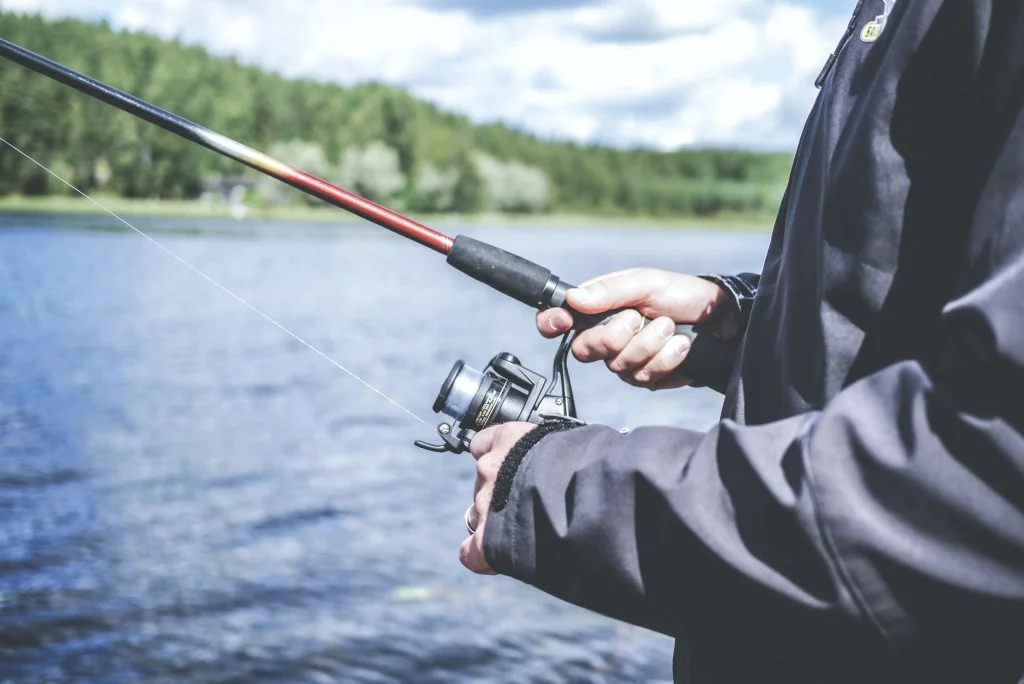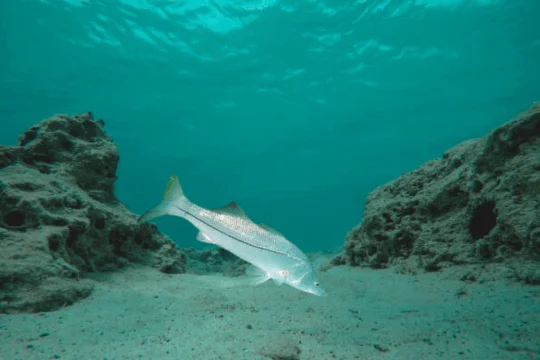
Saltwater fly fishing is an exciting and thrilling sport that combines the beauty of fly fishing and the excitement of saltwater angling. It allows anglers to explore vast coastal waters and target various fish species.
From the colourful coral reefs of tropical areas to the rugged coastlines of temperate regions, this technique offers a unique and diverse angling experience. This detailed guide will delve into saltwater fly fishing, providing valuable insights and practical tips to help you have a successful and rewarding fishing adventure.

What is Saltwater Fly Fishing?
Saltwater fishing involves using specialized fly fishing techniques, equipment and flies to target fish species that inhabit saltwater environments. Unlike freshwater fly fishing, saltwater fly fishing presents unique challenges due to the larger size and power of saltwater species, the impact of tides and currents, and the need to cast effectively in windy conditions.
However, with the right knowledge and skills, saltwater fishing can be a gratifying pursuit.
Tips and Techniques
Adapting your approach to the environment’s unique characteristics is crucial to succeed in saltwater fly fishing. Here are some essential tips to enhance your chances of a productive saltwater fly fishing experience:
- Understanding Tides and Currents: Saltwater fishing is heavily influenced by tidal movements and currents. Learning to read tides and identify productive fishing windows can significantly improve your chances of success.
- Mastering the Double Haul: Mastering the double haul casting technique is essential for generating more incredible line speed and distance, enabling you to reach distant targets and overcome strong winds. Practice this technique to become proficient in saltwater fly casting.
- Choosing the Right Flies: Saltwater flies are designed to imitate the prey species in coastal waters. Selecting flies that match the prevalent baitfish, shrimp, or crab patterns will increase your chances of enticing strikes from saltwater gamefish.
- Strip-Set Hooking Technique: Saltwater species often require a strip-set hooking technique, unlike traditional trout fishing. Instead of relying solely on rod tension, use a quick line strip to set the hook firmly and ensure a solid connection with the fish.
The Best Fly Fishing Setup for Saltwater
Selecting the appropriate gear for this technique is crucial for maximizing your chances of success. Consider the following factors when choosing your setup:
- Saltwater Fly Rod: Opt for a sturdy fly rod specifically designed for saltwater use. A fast-action rod in the 8 to 10-weight range is ideal for targeting a wide range of saltwater species.
- Saltwater Fly Reel: Invest in a quality saltwater fly reel with a reliable drag system capable of handling powerful fish. Look for corrosion-resistant materials to withstand the harsh saltwater environment.
- Saltwater Fly Line: Choose a weight-forward, floating saltwater fly line with a tropical coating to withstand high temperatures and improve casting distance. Ensure it matches the weight designation of your fly rod.
- Leaders and Tippets: Use strong leaders and tippets designed for saltwater applications. Fluorocarbon leaders provide excellent abrasion resistance and stealthy presentation.
Modern Technology in Saltwater Fishing Techniques
Advancements in technology have revolutionized saltwater fishing techniques, enhancing the angler’s experience and their chances of success. Here are some modern tools and equipment used in this technique:
- Saltwater-Specific Fly Lines: Specialized saltwater fly lines with features like low-stretch cores, aggressive tapers, and tropical coatings improve casting distance, accuracy, and line control.
- Polarized Sunglasses: High-quality polarized sunglasses are essential for spotting fish, underwater structures, and potential hazards. They reduce glare and provide better visibility, enabling you to make accurate casts and spot fish more effectively.
- GPS and Fish Finders: Utilizing GPS technology and fish finders can help anglers locate productive fishing grounds, navigate unfamiliar waters, and identify underwater structures where fish may congregate.
- Saltwater Fly Tying Tools: Fly-tying enthusiasts can use advanced tools and materials specifically designed for saltwater flies. These tools allow for making durable and realistic patterns that effectively imitate saltwater prey.
Prime Locations for Saltwater Fishing
Saltwater fly fishing offers a vast array of stunning locations around the world. Some prime destinations renowned for their saltwater fly fishing opportunities include:
- The Florida Keys, USA: Known for its abundant flats and diverse fish species like bonefish, tarpon, and permit, the Florida Keys provide a mecca for saltwater fly anglers.
- Christmas Island, Kiribati: Situated in the Pacific Ocean, Christmas Island offers unparalleled opportunities to target species like giant trevally, bonefish, and triggerfish in crystal-clear waters.
- Seychelles: The remote islands boast some of the most pristine saltwater habitats with unique species such as bonefish, giant trevally, and milkfish.
- Belize: With its extensive barrier reef system and mangrove-lined flats, Belize is a haven for saltwater fly fishing enthusiasts. Expect encounters with tarpon, bonefish, and permit.
Targeted Species in Saltwater
Saltwater fly fishing opens up possibilities regarding the species you can target. Some popular saltwater gamefish include:
- Bonefish: Known for their speed and elusiveness, bonefish are a prized target for saltwater fly anglers. They inhabit shallow flats and are famous for their blistering runs.

- Tarpon: Revered as the “silver king,” tarpon is a powerful fish that leaps and thrashes in its acrobatic displays. They provide an exhilarating challenge for fly anglers.

- Permit: Considered one of the most challenging saltwater species to catch on the fly, permits are known for their wariness and selective feeding habits. Landing a permit is a true accomplishment.

- Snook: Found in mangroves, estuaries, and nearshore waters, snook are aggressive predators that readily take flies. They offer exciting encounters and explosive strikes.

Conclusion
Fly fishing in saltwater is an incredible adventure that combines angling excitement with the stunning beauty of coastal landscapes. It’s a journey that allows you to immerse yourself in the nuances of saltwater environments, discover the perfect gear and techniques for success, and explore prime fishing locations that will leave you in awe.
So, gather your fly rod, skillfully tie those saltwater flies, and prepare yourself for the thrilling experience and immense satisfaction that saltwater techniques offer. Get ready to create memories that will last a lifetime amidst the captivating world of saltwater angling.
FAQs
Q. Is saltwater fly fishing more challenging than freshwater fly fishing?
A. While both types of fishing have unique challenges, saltwater fly fishing often involves larger and more powerful fish, unpredictable conditions, and the need for long-distance casting in windy environments, making it generally more demanding.
Q. Do I need specialized equipment for fly fishing in saltwater?
A. Using gear specifically designed for saltwater use is recommended, including saltwater fly rods, reels with corrosion-resistant materials, tropical fly lines, and strong leaders and tippets.
Q. Can beginners try saltwater fly fishing?
A. Yes, beginners can try this technique. However, it’s advisable to learn the basic techniques and gain some proficiency in freshwater fly fishing before venturing into saltwater environments.
Q. Which is the best season for saltwater fishing?
A. The best season for saltwater fishing can vary depending on the location and targeted species. Research the specific destination and consult with local guides to determine the optimal time for your desired catch.
Q. Are catch-and-release practices important in fly fishing?
A. Yes, catch-and-release practice is crucial for conserving saltwater species and the sustainability of the fishery. Follow proper handling techniques and release fish carefully to ensure their survival.


Leave a Reply